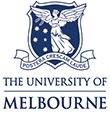An unconventional T cell nexus drives HCK-mediated chronic obstructive pulmonary disease in mice
Authors:
- Hsu, Amy T.
- O'Donoghue, Robert J.J.
- Tsantikos, Evelyn
- Gottschalk, Timothy A.
- Borger, Jessica G.
- Gherardin, Nicholas A.
- Xu, Calvin
- Koay, Hui-Fern
- Godfrey, Dale I.
- Ernst, Matthias
- Anderson, Gary P.
- Hibbs, Margaret L.
Details:
eBioMedicine, Volume 115, 2025-05-31
Article Link: Click here
Background Chronic obstructive pulmonary disease (COPD) is a heterogeneous inflammatory lung disease leading to progressive, destructive lung function decline, disability and death, and it is refractory to all current treatments. Haematopoietic cell kinase (HCK) is a druggable SRC-family non-receptor protein tyrosine kinase and COPD candidate gene. It is implicated in the chronic and non-resolving inflammation that causes mucosecretory bronchitis and destruction of small airways and alveoli, but how it drives pathophysiology remains obscure. Methods Studies primarily utilised gene-targeted mice with a gain-of-function mutation in Hck that rendered the enzyme constitutively active. Bone marrow chimeras were established to determine the origin of disease, and the lung disease was investigated using histopathology, morphometry, flow cytometry and single-cell sequencing techniques. Detailed pathways mediating disease pathogenesis were examined using specialised knockout mice. Findings HckF/F mice developed intense granulocytic mucosecretory inflammation. Bone marrow chimeras revealed that stromal-derived granulocyte-colony-stimulating factor (G-CSF) resulted in lung inflammation and emphysema but not mucus production; while its upstream regulator, interleukin (IL)-17A, itself implicated in emphysema and mucus overproduction, was produced by Vγ6Vδ1 T cells that were recruited to airspaces. Nonetheless, lung disease was unchanged upon genetic deletion of γδ T cells, due to niche-filling expansion of IL-17A-producing mucosal-associated invariant T cells. Strikingly, IL-17A deletion abrogated inflammation, alveolar destruction and mucus overproduction in HckF/F lungs. Interpretation These findings highlight the role of HCK as an apical regulator of an unconventional T cell axis that drives IL-17A/G-CSF/granulocyte-mediated pathology in COPD, and underscore the rationale for therapeutically targeting HCK. Funding This work received support from the National Health and Medical Research Council Australia, the Victorian Cancer Agency, Melbourne Australia, the Australian Research Council, the Australian Government and the School of Translational Medicine, Monash University, Australia.


